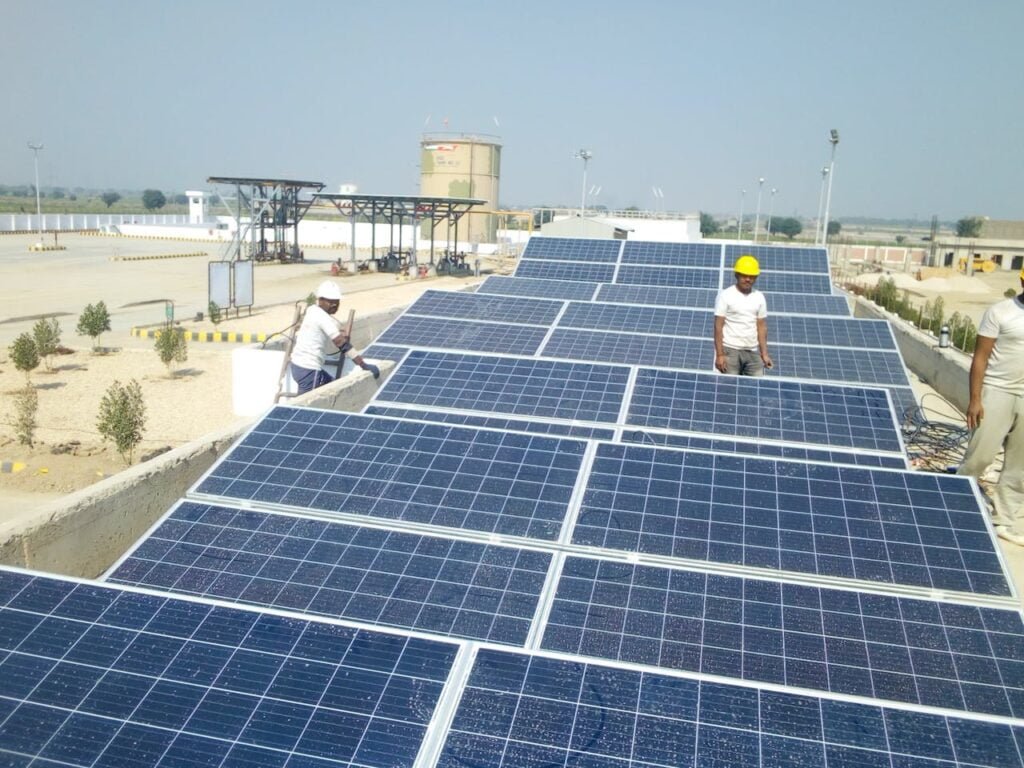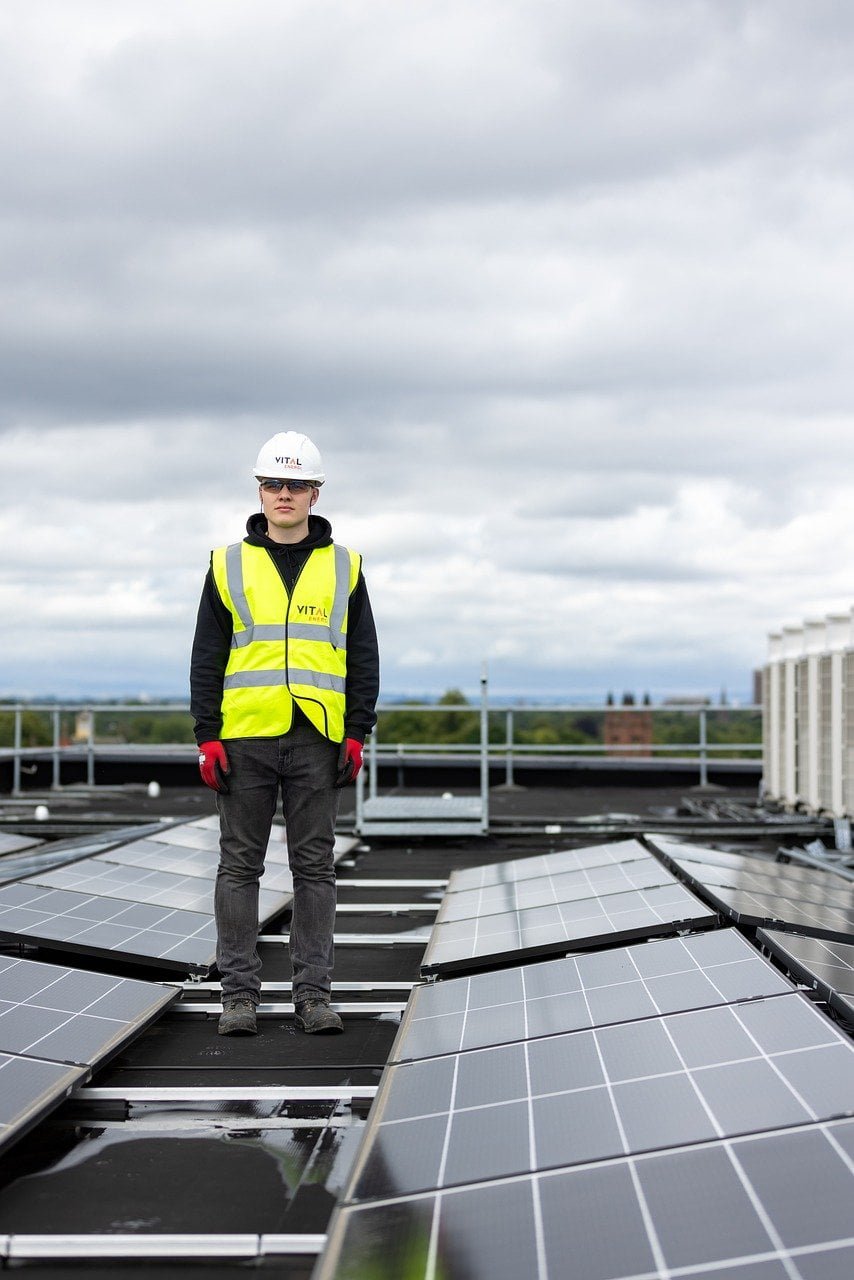If you’re in Chandler, AZ, and considering adding a battery storage system to your home, you’re making a smart move. With all the sunshine we get here, it makes sense to make the most of it. While installing solar panels is a great start, adding a battery can really boost your energy independence.
So, what’s the scoop on storing solar energy? Why should you even bother, and more importantly, which option suits you best? Let’s break it down, especially for folks living in Chandler.
Why Think About Storing Solar Power?
Why Think About Storing Solar Energy? Before diving into the details, let’s chat about why you might want to invest in a system to store your solar energy.
Energy Independence
Storing your extra solar energy means you can use it when the sun’s not out. This makes you less dependent on the grid, which is super handy during power outages or if you’re aiming to cut down on your energy bills.
Time-of-Use Rates
In Chandler, like many parts of Arizona, utility companies often charge more for electricity during peak hours. By using stored energy during those pricey times, you can dodge those higher rates.
Environmental Impact
Using more of your own solar energy helps reduce your carbon footprint. It’s a small step that makes a big difference for our planet.
Boost in Home Value
Homes with solar panels already get a bump in property value. Adding a system to store that energy can make your home even more appealing to buyers looking for energy efficiency and sustainability.
Choices for Storing Solar Power Available
Now that you’re on board with storing that solar energy, let’s dive into the different options out there. Not all batteries are the same, so it’s key to pick the one that fits what you’re looking for.
1. Tesla Powerwall
The Tesla Powerwall is hands down one of the most popular solar batteries out there, and it’s easy to see why. It’s got that slick look, packs a punch, and comes loaded with Tesla’s top-notch tech.
Pros:
- High Capacity: The Powerwall offers a 13.5 kWh capacity, which is enough to power most homes through the night.
- Scalability: You can stack up to 10 Powerwalls if you need more storage.
- Reliable Brand: Tesla is a trusted name in the energy world.
Cons:
- Cost: The Powerwall is on the pricier side.
- Availability: Tesla’s popularity means there can be a wait time to get your hands on one.
Is it right for you? If you’re looking for a reliable, high-capacity battery and don’t mind spending a bit more, the Tesla Powerwall is a solid choice. It’s perfect for those who want to be on the cutting edge of technology and appreciate a sleek, modern design.
2. LG Chem RESU
LG Chem is another big name in the battery world, and their RESU (Residential Energy Storage Unit) series is a popular option for homeowners.
Pros:
- Compact Size: The RESU is smaller than some other options, making it easier to fit in your garage or utility room.
- Good Capacity: With options ranging from 6.5 kWh to 16 kWh, there’s a RESU battery for most homes.
- Durability: LG Chem batteries are known for their long lifespan and reliability.
Cons:
- Limited Availability: Depending on your location and installer, the LG Chem RESU might not be as readily available as other options.
Is it right for you? The LG Chem RESU is a great choice if you’re looking for a compact, reliable battery that won’t break the bank. It’s ideal for homeowners who need a mid-range capacity and value durability.
3. Enphase Encharge
Enphase is known for its microinverters, but they’ve also made a name in the battery storage world with their Encharge series.
Pros:
- Modular Design: Encharge batteries are modular, meaning you can add more units as needed.
- Integration with Enphase Microinverters: If you already have Enphase microinverters, the Encharge system will integrate seamlessly.
- Advanced Monitoring: Enphase’s app provides detailed insights into your energy production and usage.
Cons:
- Lower Capacity per Unit: Each Encharge unit has a lower capacity compared to other brands, so you might need more units for the same storage.
Is it right for you? If you already have or are planning to use Enphase microinverters, the Encharge system is a no-brainer. It’s also a good option for those who value detailed monitoring and a modular system that can grow with your needs.
4. Sonnen Eco
Sonnen is a German company that’s been making waves in the U.S. with their eco-friendly, community-driven approach to energy storage.
Pros:
- Eco-Friendly: Sonnen batteries are designed with sustainability in mind, using non-toxic, recyclable materials.
- Energy Sharing: Sonnen offers the option to join a virtual power plant, where you can share energy with your neighbors.
- Durability: Known for their long lifespan and reliability.
Cons:
- Cost: Sonnen batteries are on the higher end of the price spectrum.
- Less Availability: Sonnen isn’t as widely available as some other brands, so finding an installer might be a bit harder.
Is it right for you? If you’re passionate about sustainability and want a battery that reflects those values, the Sonnen Eco is a fantastic choice. It’s also great for those interested in community energy sharing and cutting-edge technology.
5. BYD B-Box
BYD, which stands for “Build Your Dreams,” is a Chinese company that’s really making waves with their B-Box series. They’re shaking up the solar battery scene and offering some serious innovation.
Pros:
- Scalability: The B-Box is modular, allowing you to scale up your system as needed.
- Affordability: BYD offers a more budget-friendly option without sacrificing too much on quality.
- Good Performance: Known for consistent performance and reliability.
Cons:
- Less Brand Recognition: BYD isn’t as well-known in the U.S., so you might need to do a bit more research before committing.
Is it right for you? If you’re looking for a scalable, affordable option and don’t mind going with a less recognized brand, the BYD B-Box could be a good fit. It’s ideal for those who want to start small and expand their system over time.

Important Tips for Picking a Solar Power Storage Option
Picking the right energy storage for your home isn’t just about choosing a brand; you’ve got to think about a few key things.
1. Capacity
The capacity of a battery is measured in kilowatt-hours (kWh) and determines how much energy it can store. You’ll need to calculate your energy usage to figure out how much capacity you need. If you’re planning to use the battery to power your home during the night, you’ll want a battery with a higher capacity. However, if you’re just using it to offset peak usage times, a smaller capacity might suffice.
2. Cycle Life
A battery’s cycle life refers to how many times it can be charged and discharged before it starts to lose efficiency. A longer cycle life means your battery will last longer and provide more value over its lifetime.
3. Depth of Discharge (DoD)
The DoD is the percentage of the battery’s capacity that can be used before it needs to be recharged. Batteries with a higher DoD allow you to use more of the battery’s capacity, which can be more efficient and cost-effective.
4. Warranty
Always check the warranty when choosing a solar battery. Most reputable brands offer a warranty of 10 years or more, which covers you in case of defects or early degradation.
5. Integration with Existing Systems
If you already have a solar system installed, you’ll want to make sure the battery you choose is compatible with your existing setup. Some batteries work better with certain inverters or solar panel brands, so it’s important to do your research.
6. Cost
While it’s important to consider the upfront cost of the battery, don’t forget to factor in the long-term savings. A more expensive battery with a longer lifespan and higher efficiency might save you more money in the long run.
The Installation Process
Once you’ve picked out the right solar setup for your needs, the next step is getting it installed. Here’s what you can expect:
Site Assessment
Your installer will assess your home to determine the best location for the battery. This is usually in a garage, basement, or utility room where it can be easily connected to your solar system.
Permitting and Paperwork
In Chandler, you’ll need to get the necessary permits before installation. Your installer should handle this process for you, but it’s a good idea to ask about it upfront.
Installation Day
On the day of installation, the installer will set up the battery and connect it to your solar panels and inverter. This usually takes a few hours, depending on the complexity of your system.
Testing and Commissioning
After installation, the system will be tested to ensure everything is working correctly. The installer will walk you through how to monitor your battery and answer any questions you have.
Ongoing Maintenance
Solar batteries require minimal maintenance, but it’s still a good idea to have your system checked periodically to ensure it’s performing at its best.
Maximizing Your Solar Battery’s Potential
Once your solar setup is up and running, there are a few things you can do to make sure you’re getting the most bang for your buck.
Monitor Your Usage
Use the monitoring app provided by your battery manufacturer to keep an eye on your energy production and usage. This will help you make adjustments to maximize efficiency.
Time Your Energy Use
Try to use energy-intensive appliances during the day when your solar panels are producing the most energy. This will allow you to store more energy in your battery for use during peak times or at night.
Stay Informed
Keep up with any updates or software upgrades from your battery manufacturer. These can often improve performance and add new features to your system.
Plan for the Future
If you anticipate needing more energy storage in the future, consider adding more battery units to your system. Many systems are modular, allowing you to scale up as your needs change.
Conclusion
Investing in energy storage is a smart move for homeowners who want to get the most out of their solar setup and enjoy more energy independence. There are plenty of great options available, so you’ll find one that fits your needs. Whether you’re interested in the high capacity of the Tesla Powerwall, the compact reliability of the LG Chem RESU, or the eco-friendly focus of the Sonnen Eco, there’s something for everyone.
Take a moment to evaluate your energy needs, think about the key factors, and pick the system that’s right for you. With the right setup, you’ll be on your way to a more sustainable, cost-effective, and energy-independent future.



